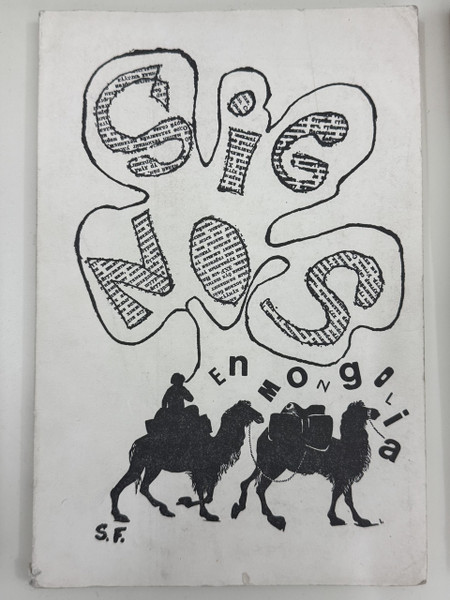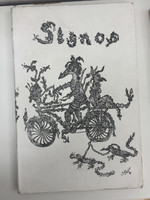- Travel
-
Exhibits
- La Portada Cubana
- Immortal Cuba: Artists Take on Their Heroes
- Seattle Poster Exhibit
- Sandra Dooley & Alejandrina Cué
- The Art of Wayacón
- Cuban Folk Art
- Cuba In Black And White
- 25 Years of Cuban Art Space
- Summer Folk Art Expo
- ¡SPRING AWAKENING FROM CUBA!
- Celebrating The Art Of Cuban Women
- Celebrating Paper, Affordable Art from Cuba
- Art of the Revolution
- Outsider Art
- Lost and Found
- En la lucha: Celebrating Cuban Women and Their Art
- Cuban Art Stash
- 100 Fires: 5 Cienfuegos Artists' Work on Paper
- Waya + Monte! Magic Realism in Cienfuegos
- Viva Cuba Viva! Poster Show
- Cultivando Sueños
- Black Lives Matter in Cuba Jan 9-March 27
- Leandro Soto: Crónicas visuales
- Cuban Canvas
-
Archive
- Global Reflection 2018: Spirit and Community
- Exhibit in the cloud: Contemporary Works on Paper
- MADE IN CUBA! MINNEAPOLIS EXHIBIT
- Cuban Posters and Photography from CCS collection
- AUTUMN SALE! Sept/Oct 2017
- SPRING ARTS AND CRAFT SALE
- Vuelo Directo/Non Stop: Alberto & Alejandro Lescay
- The Many Faces of Fidel
- Somos
- Made in Cuba!
- The US empire in Cuban graphics
- Made in Cuba/Seattle exhibit
- Entre Nos
- Looking Back
- Cuban Art Space
- Membership/Donate
- About Us
- Cuba News
-
Samuel Feijóo's whimsical cover design features the word "SIGNOS" rendered in his characteristic hand-drawn lettering filled with crosshatched text patterns, while below, the phrase "en Mongolia" curves playfully around silhouettes of two Bactrian camels (the distinctive two-humped camels native to Central Asia) laden with cargo and riders. The simple black-and-white composition—signed with Feijóo's initials "SF"—captures the nomadic essence of Mongolian culture through immediately recognizable iconography while maintaining the journal's commitment to accessible, folk-inspired graphic design. The interior title page features a charming Mongolian children's drawing showing animals, spirals, and abstract forms in a naive style that embodies the journal's democratic approach to visual expression.
Published during the early 1980s as Cuba maintained strong cultural ties with fellow socialist nations, this issue of "Signos" celebrates the People's Republic of Mongolia, a nation that had transitioned from feudalism to socialism under the direction of Suje-Bator. The notice (Aviso) describes Mongolia as a country of ancient history that advanced rapidly in contemporary times toward general development. The journal's pages offer varied perspectives on Mongolian history, geography, folkloric music, popular customs, engravings, applied arts, and national sports. Feijóo emphasizes that "Signos" aspires to provide readers with a brief but efficient synthesis of this enormous country of small population, striving to secure a future of superior human greatness.
The comprehensive table of contents reveals the scope of this cultural survey: articles include "La Boda en Mongolia" (The Mongolian Wedding) by Ricardo Danza, Mongolian proverbs and riddles, folkloric stories, "Dios y Su Madre" (God and His Mother), "El Camello Mongol" (The Mongolian Camel) by Ricardo Danza, "Relatos de la Vida Mongola" (Stories of Mongolian Life) by Teresa Alejo, an interview with Tagulju, national sports, folkloric musical instruments, folkloric songs, Samuel Feijóo's essay "Breve Mongolia," "El Creyente Budista" (The Buddhist Believer) by Ricardo Danza, contemporary Mongolian printmakers, and "Protección a la Naturaleza Mongola" (Protection of Mongolian Nature) by Z. Clanboyar. An interior illustration shows a Mongolian figure labeled "Sharab" carrying a large woven basket. The journal's postal address is listed as Biblioteca Martí, Santa Clara, Cuba, indicating Feijóo's base in central Cuba's Las Villas province. This issue exemplifies how "Signos" functioned as a vehicle for internationalist cultural education, introducing Cuban readers to socialist brother nations through the lens of popular expression and folk traditions.
-
-
Discover More at the Center for Cuban Studies







